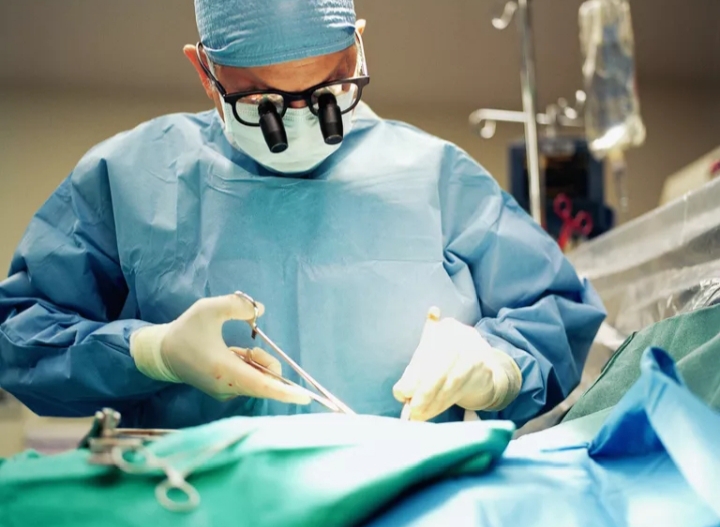The earliest surgeries in history were crude at best and likely to have been performed out of desperation or ignorance. Surgery as we know it did not truly begin until the late 1800s, and even then, the infection was common and outcomes were poor.
Surgical procedures that are commonplace today, such as appendectomies, were not always done. In fact, until 1885, a person with appendicitis was expected to die of the infection that occurred once the appendix ruptured. Early techniques were rudimentary, or even barbaric by today’s standards, as anesthesia was not commonly used until the mid-to-late 1800s.
According to some sources, it wasn’t until the 1900s that the likelihood of surviving surgery was greater than the chance of dying during or immediately after surgery.
Today, surgery takes a wide variety of forms and is often performed using minimally invasive techniques. This has shortened recovery times, improved outcomes and minimized complications for most patients.
To get a sense of how much surgery has changed, take a look at the timeline of major developments in the field.
6,500 B.C.E.: Skulls found in France show signs of a rudimentary surgery called trepanation, which involves drilling a hole in the skull.
1540 C.E.: English barbers and surgeons unite to form The United Barber-Surgeons Company. These barber-surgeons performed tooth extractions and bloodletting.
Physicians were considered an entirely different profession from surgeons. They treated illness with medications.
1818: First transfusion of human blood.
1843: First hysterectomy performed, in England.
1843: First use of ether as an anesthetic.
1846: First public use of anesthesia during surgery. Ether was used. The patient was conscious but felt no pain during the procedure to remove a tumor in his neck.
1849: Elizabeth Blackwell is the first woman to graduate from medical school.
1855: Mary Edwards Walker graduates from medical school and becomes the first female surgeon in America.
1867: British surgeon Joseph Lister publishes Antiseptic Principle in the Practice of Surgery, extolling the virtues of cleanliness in surgery. The mortality rate for surgical patients immediately falls.
1885: First successful appendectomy performed, in Iowa.
1890’s: Widespread use of chemical agents to minimize germs. Carbolic acid was put on incisions to minimize germs and decrease infection rates.
1893: First successful heart surgery performed, Provident Hospital, Chicago. The surgery repaired the pericardium, the sac around the heart. Many do not consider this to be the first successful “heart surgery” because the heart itself was not operated on.
1895: First X-ray performed, in Germany.
1896: First successful heart surgery performed, in Germany. Surgeons repaired a stab wound in the muscle of the right ventricle.
1905: First successful cornea transplant.
1917: First documented plastic surgery performed, on a burned English sailor.
1922: Insulin first used for the treatment of diabetes, allowing people with diabetes to survive after diagnosis.
1928: Antibiotics discovered.
1930: German has the first sex-change operation (male to female).
1937: First blood bank opens, helping make more surgeries possible by making it possible to treat bleeding during the procedure.
1940: First metal hip replacement surgeryperformed.
1950s: First LASIK eye procedures performed, in Columbia.
1950: First successful organ transplant. The kidney recipient rejected the organ after eight months.
1952: First successful heart surgery where the heart was stopped and restarted.
1953: First successful surgery using a heart-lung bypass machine that provides blood and oxygen to the body while the heart and lungs are stopped.
1954: First successful living donor kidney transplant, the kidney was donated by the recipient’s twin brother. The recipient lived eight years after the procedure.
1966: First successful pancreas transplant.
1967: First successful liver transplant.
1967: First heart transplant surgery performed, by South African Christian Barnard. The heart recipient survived 18 days until succumbing to pneumonia.
1975: First organ surgery performed using laparoscopic, or minimally invasive, technique.
1978: First “test-tube” baby born using in vitro fertilization.
1982: Jarvik-7 artificial heart used.
1984: Baby Fae survives 21 days after being transplanted with the heart of a baboon.
1985: First documented robotic surgery.
1999: First successful hand transplant (previous patients had rejected their grafts).
2000: da Vinci robotic surgical system wins U.S. Food and Drug Administration approval. The system is now used in a wide variety of procedures, including prostate surgeries and coronary artery bypass.
2007: First natural orifice transluminal endoscopic surgery performed. This technique uses a natural body opening, such as the mouth, to insert instruments and minimize recovery times.
2008: Connie Culp has the first near-total full face transplant in the United States, performed at The Cleveland Clinic.
2010: World’s first full-face transplant performed, in Spain.
2013: A nerve transfer procedure gives a paraplegic patient the ability to move their hands.
Surgery continues to evolve, with science making great strides on an almost daily basis. As science and research lead to new and improved surgical techniques, patients have better outcomes, faster recoveries, and less pain. New surgeries are treating and curing diseases that were previously untreatable, and patients are living longer and fuller lives.

